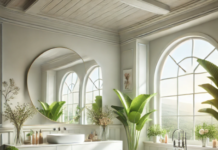Planting Against Walls And Fences – When space on the ground is at a premium, you can grow plants on or up, walls and fences. If the planting is above ground, the container must be firmly fixed in position, so that there is no possibility of it falling.
Secure boxes on to window sills with a metal bracket or a strong wire restraint. Frequently check that the brackets and fittings remain both strong and secure.

Containers standing at the base of a wall will probably be quite visible, so the material from which they are made should relate well to the background. Terracotta, stone, and painted wood are good in almost all situations; unpainted wooden containers tend to look better against rustic buildings; and the smoother finishes of fiberglass, plastic, or metal are most effective in front of contemporary structures. You can have fiberglass containers, made to order, in almost any color. Although they are quite expensive, the additional cost for a special color is not that much extra.

Honeysuckle
As fences are not as strong as walls, you should only hang light containers, such as wire half baskets, on them. It is easy to make your own containers, using a double layer of chicken wire, cut to make a half or quarter sphere and stuffed with moss. Secure it to the fence with hooks and screws. If you have a fence crying out for foliage cover, but there is no bed at its base, use good-sized containers beside it. Tubs made from teak or cedar look extremely smart against wood. Plant them up with ivy or evergreen honeysuckle.

In France, Germany and Italy pelargoniums are widely used in containers because they grow so profusely during the warm summers. They are trained up walls, as well as left to trail.

The rich deep hues of the flowers and greenery against the lighter pots and dark wall.






























